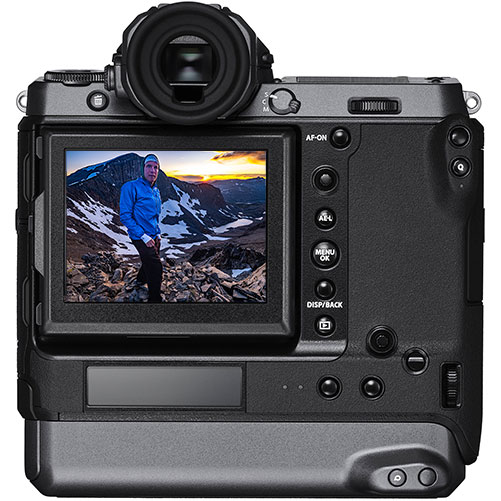Reader Question on Hasselblad X1D II: Dust vs Fujifilm GFX100 and Fujifilm GFX-50S
See also Sensor Cleanliness: how to change a lens so as to minimize dust on the sensor.
Chris L writes:
Thank you for your ongoing reviews of the Hasselblad X1D II system.
Your medium format coverage is the most thorough and helpful available anywhere today.
The Fujifilm GFX cameras are the first mirrorless systems I’ve used (initially the Fujifilm GFX-50S and now the Fujifilm GFX100) which don’t require frequent sensor cleaning. (By comparison, the Sony A7R series cameras, which I also use regularly, are dust magnets).
One explanation I’ve read is that Fujifilm’s IBIS system is better at shaking dust off (and can be set to do so automatically); another is that the GFX sensors stacks and shutters are somehow designed to reduce dust buildup and/or visibility.
As the X1D depends mostly on primes, lens changes will inevitably expose its sensor to even more dust than the typical GFX kit, but Hasselblad doesn’t appear to have any particular mechanisms to deal with this problem.
Could you comment on the degree to which you’ve found dust an issue after shooting the X1D in windy and dusty environments?
DIGLLOYD: the Sony A7R IV/III/II/I anti-dust system is worthless—I have never seen it succeed in removing visible dust spots—see Sony A7R IV: Horrible Sensor Dust Problems and sensor cleanliness.
View dust blowers at B&H Photo.

The Hasselblad X1D II has the same exposed sensor as the Sony cameras (but much larger!). As far as I can tell it is just as bad as Sony. However, Hasselblad doesn’t pretend to have a useless dust-off feature like Sony does, so that’s a plus.
Making things worse, the X1D II has no focal plane shutter, so there is nothing to be closed to protect the sensor from the environment (not that Sony bothers to do so, which is really bad design).
I experienced my major first dust spot within 15 minutes of using the Hasselblad X1D II, roughly the 10th frame I took. I had done one lens swap, it was not windy at all and I took my usual extra care as described below. That was enough for a very large piece of dust to stick to the sensor which polluted the rest of the night’s shooting. I was able to blow it off with a bulb blower.
The Fujifilm medium format system is far better designed for anti-dust, more on that below.

Hasselblad X1D II 50C + Hasselblad XCD 80mm f/1.9 @ 65.8mm equiv (80mm)
ENV: Mt Whitney foothills, altitude 6400 ft / 1951 m, 55°F / 12°C
RAW: Enhance Details, vignetting corrected, pull 0.4 stops, +76 Shadows, +40 Whites, +20 Dehaze, +20 Clarity
[low-res image for bot]
Dust: Hasselblad X1D II vs Fujifilm GFX100, Fujifilm GFX-50S
See also Fujifilm GFX Sensor Cover Glass Thickness.

In my extensive experience with the Fujifilm GFX100 and the Fujifilm GFX-50S, dust has never been an issue of concern. The occasional minor dust specks tend to disappear on their own using the anti-dust feature, but it is the ingenious 9mm spacing that is most important.
The discussion of the sensor cover glass on the Fujifilm GFX on the Fujifilm-X web site shows a 9mm spacing gap to the sensor, done to reduce dust issues by defocusing the dust, shown below. It is the best design in the entire camera industry in terms of eliminating dust problems.
People often forget about the cover glass of a mount. This glass is meant to protect and to shake dust off the sensor. The cover glass is placed in the furthest position possible from the sensor.
Why far away? The closer the dust is to the sensor, the worse for the image quality. The dust becomes more visible if it is closer to the sensor surface as it gets into the depth of field. The cover glass should be placed as far away as possible from the sensor. If there is a mirror box, then there is minimal room to move. But this is possible for G Mount as it is comprised of a mirrorless structure.
The cover glass is placed 9mm away from the sensor surface. If you know about mount design, then we are certain that you will be surprised with the figure.




























